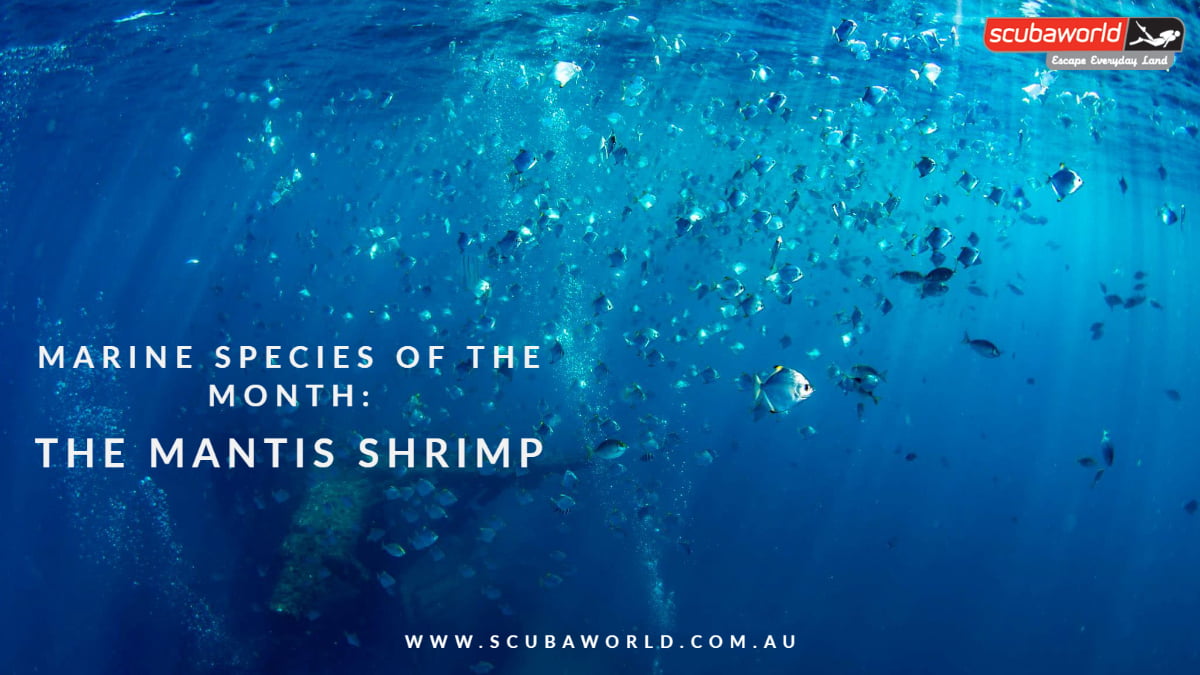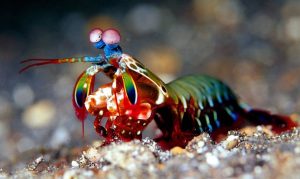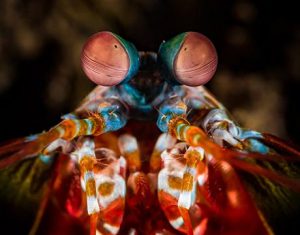
Why Scuba Divers Should Try Freediving: A Personal Perspective from an Scuba diving and Freediving Instructor
Hey everyone, I’m Matt, co-director of OceanSense Freediving here on the Sunny Coast. Over the

The mantis shrimp is nothing short of mind blowing, but how much do you know about this underwater critter that packs a killer punch?
So here are 5 smashing facts about the mantis shrimp.
What! They’re not shrimp?
True fact, despite being called a mantis shrimp they are neither! They are Stomatopods, which are a hard-shelled animal like crabs, crayfish, shrimp, and krill so on.
There are around 450 species of mantis shrimp worldwide, and their colours range from shades of brown to bright, green, red and blue. The most infamous species is the Peacock mantis shrimp which can be found right here on the Sunshine Coast.
 Peacock Mantis Shrimp – @Metropolitan Oceanic Institute and Aquarium
Peacock Mantis Shrimp – @Metropolitan Oceanic Institute and Aquarium
Killer punch you say …
Yes, their wrecking ball “fists” spring forth from their bodies at 50 mph and well their punch is so fast
That it results in small ‘cavitation’ bubbles. This is a super-hot bubble that generates temperate of 4,400 degrees Celsius (which is nearly as hot as the sun). Their nick name thumb splitter says it all as if you handle one of them, they can break your bones. Also known to shatter their own glass enclosure at aquariums.
The animal kingdoms best pair of eyes
The mantis shrimp has the most complex set of eyes in the animal kingdom. Each eye contains 12 photo receptors that allow them to sense different types of colour.
Now as a human our eyes typically contain three types of light-sensitive cells for seeing red, blue, and green. Imagine being a mantis shrimp and perceiving the world in a psychedelic rainbow of vibrant colour!
 Mantis Shrimp Eyes – @Science Mag
Mantis Shrimp Eyes – @Science Mag
They are older than dinosaurs!
Stomatopods began evolving independently from other members of the class Malacostraca nearly 400 million years ago, about 170 million years before dinosaurs.
How they help the ecosystem
Mantis shrimps play a huge part in the marine ecosystem, regulating the numbers of other species and promoting higher overall species richness.
The burrowing behaviour of mantis shrimps contributes to the turnover and oxygenation of sediments. Mantis shrimps are also sensitive to environmental pollutants and are good bio indicators of pollution on coral reefs.
Come join us for a dive and see how many mantis shrimps we can spot, but don’t get too close to the killer punch! Check out our dive calendar here www.scubaworld.com.au/dive-schedule.
Hope to see you underwater soon.
Leila Barnsley ~ Scuba World Instructor


Hey everyone, I’m Matt, co-director of OceanSense Freediving here on the Sunny Coast. Over the
Join us Thursday 30th Jan at 5:30pm to hear David Mullins talk about nudibranch defences
Dear members, I would like to take this opportunity to inform you about a few